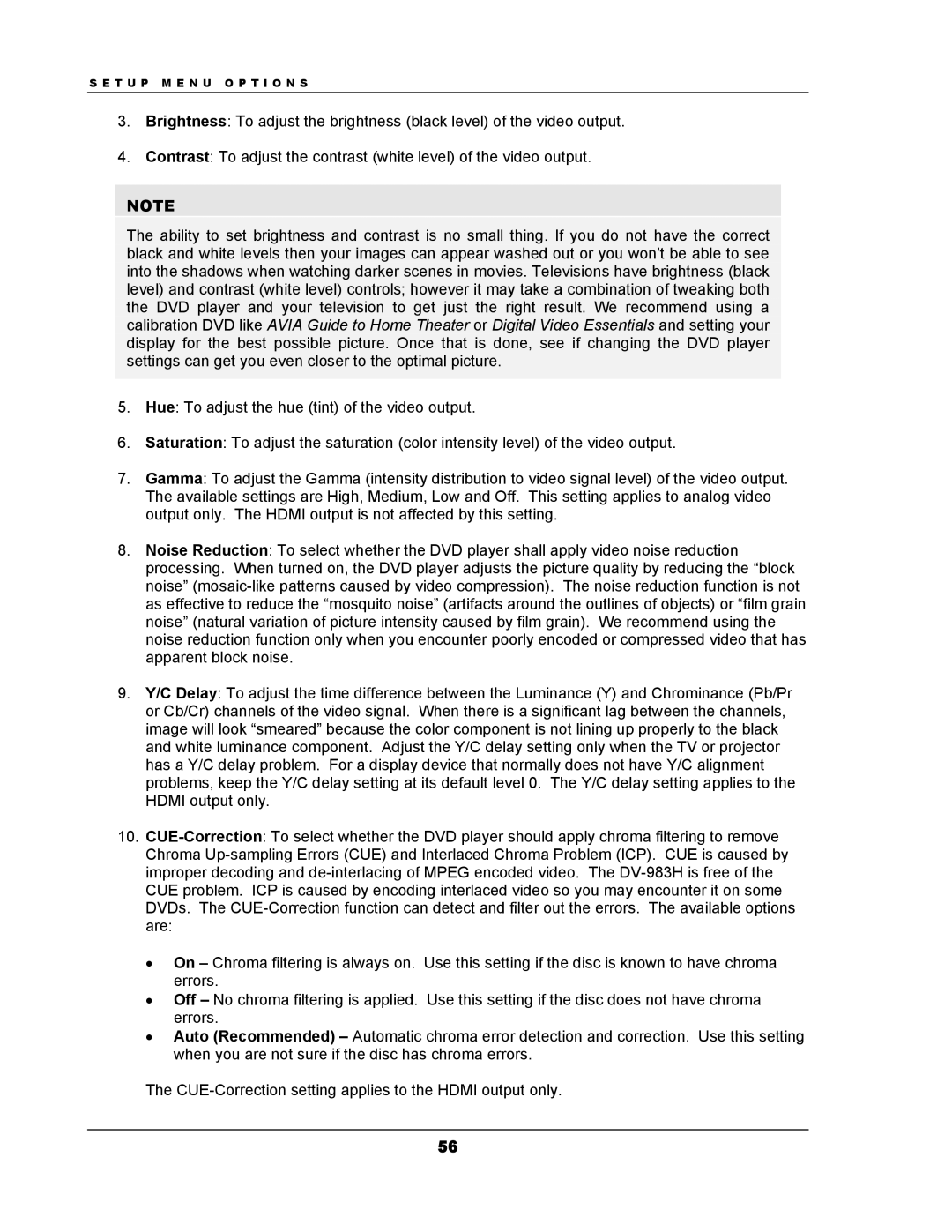
S E T U P M E N U O P T I O N S
3.Brightness: To adjust the brightness (black level) of the video output.
4.Contrast: To adjust the contrast (white level) of the video output.
NOTE
The ability to set brightness and contrast is no small thing. If you do not have the correct black and white levels then your images can appear washed out or you won’t be able to see into the shadows when watching darker scenes in movies. Televisions have brightness (black level) and contrast (white level) controls; however it may take a combination of tweaking both the DVD player and your television to get just the right result. We recommend using a calibration DVD like AVIA Guide to Home Theater or Digital Video Essentials and setting your display for the best possible picture. Once that is done, see if changing the DVD player settings can get you even closer to the optimal picture.
5.Hue: To adjust the hue (tint) of the video output.
6.Saturation: To adjust the saturation (color intensity level) of the video output.
7.Gamma: To adjust the Gamma (intensity distribution to video signal level) of the video output. The available settings are High, Medium, Low and Off. This setting applies to analog video output only. The HDMI output is not affected by this setting.
8.Noise Reduction: To select whether the DVD player shall apply video noise reduction processing. When turned on, the DVD player adjusts the picture quality by reducing the “block noise”
9.Y/C Delay: To adjust the time difference between the Luminance (Y) and Chrominance (Pb/Pr or Cb/Cr) channels of the video signal. When there is a significant lag between the channels, image will look “smeared” because the color component is not lining up properly to the black and white luminance component. Adjust the Y/C delay setting only when the TV or projector has a Y/C delay problem. For a display device that normally does not have Y/C alignment problems, keep the Y/C delay setting at its default level 0. The Y/C delay setting applies to the HDMI output only.
10.
•On – Chroma filtering is always on. Use this setting if the disc is known to have chroma errors.
•Off – No chroma filtering is applied. Use this setting if the disc does not have chroma errors.
•Auto (Recommended) – Automatic chroma error detection and correction. Use this setting when you are not sure if the disc has chroma errors.
The
56
